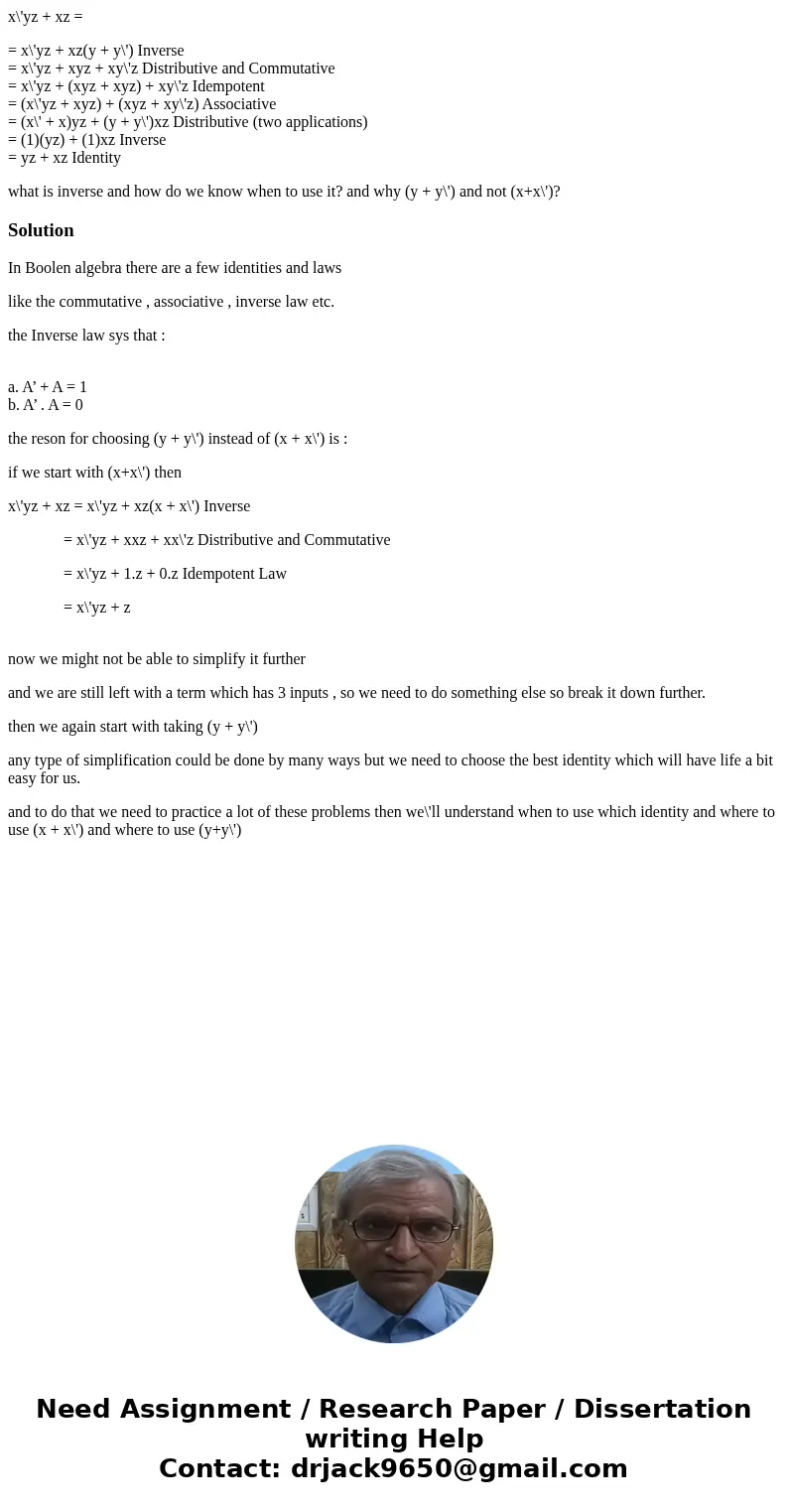xyz xz xyz xzy y Inverse xyz xyz xyz Distributive an
x\'yz + xz =
= x\'yz + xz(y + y\') Inverse
= x\'yz + xyz + xy\'z Distributive and Commutative
= x\'yz + (xyz + xyz) + xy\'z Idempotent
= (x\'yz + xyz) + (xyz + xy\'z) Associative
= (x\' + x)yz + (y + y\')xz Distributive (two applications)
= (1)(yz) + (1)xz Inverse
= yz + xz Identity
what is inverse and how do we know when to use it? and why (y + y\') and not (x+x\')?
Solution
In Boolen algebra there are a few identities and laws
like the commutative , associative , inverse law etc.
the Inverse law sys that :
a. A’ + A = 1
b. A’ . A = 0
the reson for choosing (y + y\') instead of (x + x\') is :
if we start with (x+x\') then
x\'yz + xz = x\'yz + xz(x + x\') Inverse
= x\'yz + xxz + xx\'z Distributive and Commutative
= x\'yz + 1.z + 0.z Idempotent Law
= x\'yz + z
now we might not be able to simplify it further
and we are still left with a term which has 3 inputs , so we need to do something else so break it down further.
then we again start with taking (y + y\')
any type of simplification could be done by many ways but we need to choose the best identity which will have life a bit easy for us.
and to do that we need to practice a lot of these problems then we\'ll understand when to use which identity and where to use (x + x\') and where to use (y+y\')

 Homework Sourse
Homework Sourse